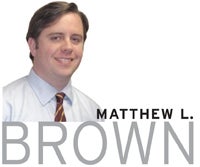Deep inside one of my favorite buildings in Worcester is a company that is making HD television possible and helped find the Titanic.
Telecast Fibre Systems Inc. is tucked into one of the lower floors at 102 Grove St., which is part of a the massive, brick mill building complex that houses dozens of businesses between Grove and Prescott Street.
Leaner And Meaner
The 50-employee company designs and builds the electronic components that allow television signals to travel over small, fiber optic cable. The key word there is small. Think of a sporting event like the Super Bowl. Literally tons of cable are necessary to broadcast that event and saving weight and space by using fiber optic cable rather than electronic cable is a no-brainer for broadcast engineers.
Fiber optic cable replaces many of those tons of electronic cable with just a couple thin fiber optic lines about the same diameter as a pencil.
What Telecast’s equipment does is convert the electronic signal coming from television cameras to a very high-speed optical signal that can be transmitted over fiber optic lines. At the other end, Telecast equipment also converts the optical signal back to an electronic signal for broadcast.
You can find Telecast’s equipment at professional golf events covered by CBS, at NASCAR events, the Olympics, the Super Bowl and at the White House and the Kremlin.
This is because the advantages of using fiber optic cable are so clear. CBS, when it broadcasts the Masters golf tournament, can send one truck rather than two to set up all the audio and video equipment. That truck can have the network set up for broadcast within a couple of days and be back on the road to the next assignment.
And according to Rich Cerny, Telecast’s president, the company is in a good position to take advantage of coming changes in the television industry.
Networks are in the process of developing 3-D sports broadcasts and Telecast’s equipment will be critical to the implementation of that system. Current HD television broadcasts require very high bandwidth signal that can’t be provided by analog equipment. Fiber optic lines have unlimited bandwidth.
Cerny said it was the Discovery Channel’s live broadcast of the discovery of the sunken ocean liner Titanic that got Telecast into HD. “That was the first HD fiber optic system for that technology at that point,” Cerny said.
Cerny, a fiber optics and communications industry veteran, said the companies he worked for before founding Telecast in 1991 did fiber optics very well and did television broadcasts, including space shuttle launches, very well, “but never really got the portability.”
Broadcast systems are portable now thanks to Telecast, and Cerny said the company has been growing every year since it began and had its best year ever last fiscal year.
Got news for our Industrial Strength column? E-mail WBJ Managing Editor Matthew L. Brown at mbrown@wbjournal.com.
Watch as Tim McCarthy describes how his company’s fiber optic technology helps major broadcasters like NBC and ESPN.

